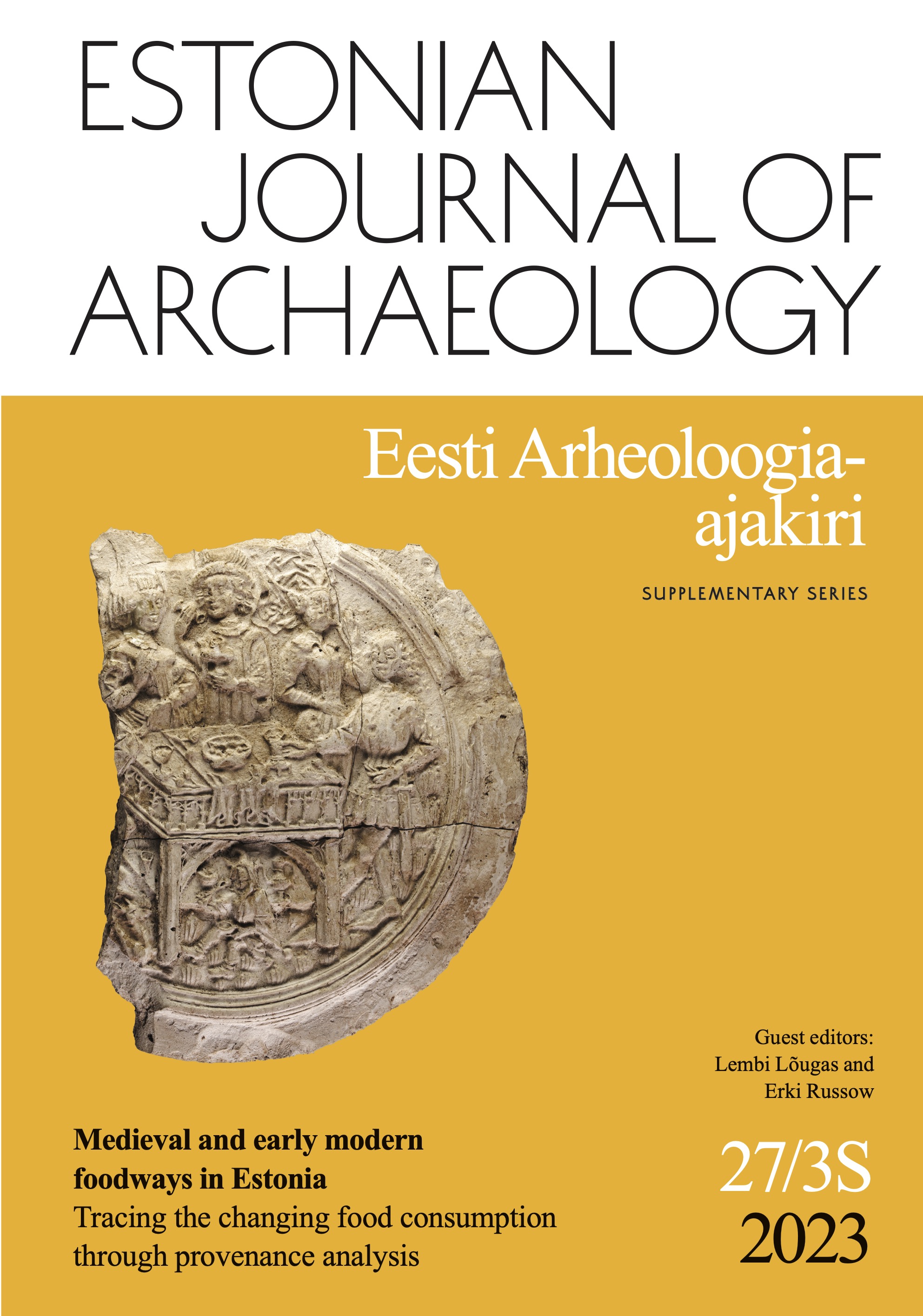Food and norms in 13th–16th century Estonia: meat and meat products
Food and norms in 13th–16th century Estonia: meat and meat products
Author(s): Inna Põltsam-JürjoSubject(s): History, Archaeology, Cultural history, 13th to 14th Centuries, 15th Century, 16th Century
Published by: Teaduste Akadeemia Kirjastus
Keywords: Medieval Livonia; meat; meat products; fasting; famine; medieval feasts; sumptuary law;
Summary/Abstract: The aim of this article is to give an overview of the norms that determined dietary patterns in medieval and early modern Estonia. The focus is on meat and on the social and cultural norms related to meat-eating. In particular, written sources shed light on what kind of norms and customs shaped the local food culture. The production and selling of groceries was subject to fixed regulations and monitored by officials. Furthermore, control over one’s appetite was imposed by church and public authorities. In one way or another, every person allowed themselves to be guided by those transcultural or local norms and value criteria.
Journal: Eesti Arheoloogia Ajakiri
- Issue Year: 27/2023
- Issue No: 3S
- Page Range: 32-49
- Page Count: 18
- Language: English

